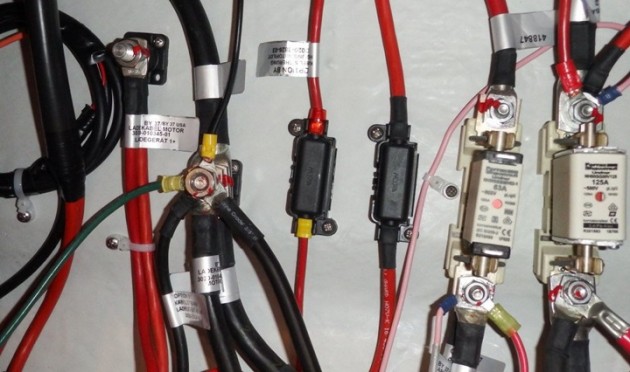Terminal Overload in Electrical Wiring
ABYC standards aim to prevent overcrowding on wire terminal studs. Here's a good example of why.
November 1, 2014
Question: This photo was taken several weeks ago on board a new boat I was looking over at one of the fall boat shows. You can see just to the left of the center of the photo a large stud type terminal with five fairly large cables and two smaller cables all connected to the one stud.

In the left-center of the photo, a nut is trying to hold down so many wire terminals that half its threads aren't even in contact with the stud.
Furthermore, if you look closely, the hex nut that is holding everything in place is not even torqued down enough for the stud to screw through all of the threads in the nut. This all looks fundamentally wrong to me. What’s your opinion on this?
Answer: I’m with you. It’s wrong, and as I’ve mentioned before on boats.com, it does not comply with ABYC Standard E-11, which limits the number of terminals on a stud to four. The problem with the installation overload here is that several of the larger cables and their lugs are stacked on top of each other instead of being fanned out so that the flat surfaces of the lugs can be tightened effectively against each other. Had that been done, the installer might have been able to get all the threads on the hex nut engaged with the stud. The primary reason for the limit of four terminals to a stud is to allow for this “fanning” out and a good tight connection. The termination job in your photo fails miserably, I’m afraid.










